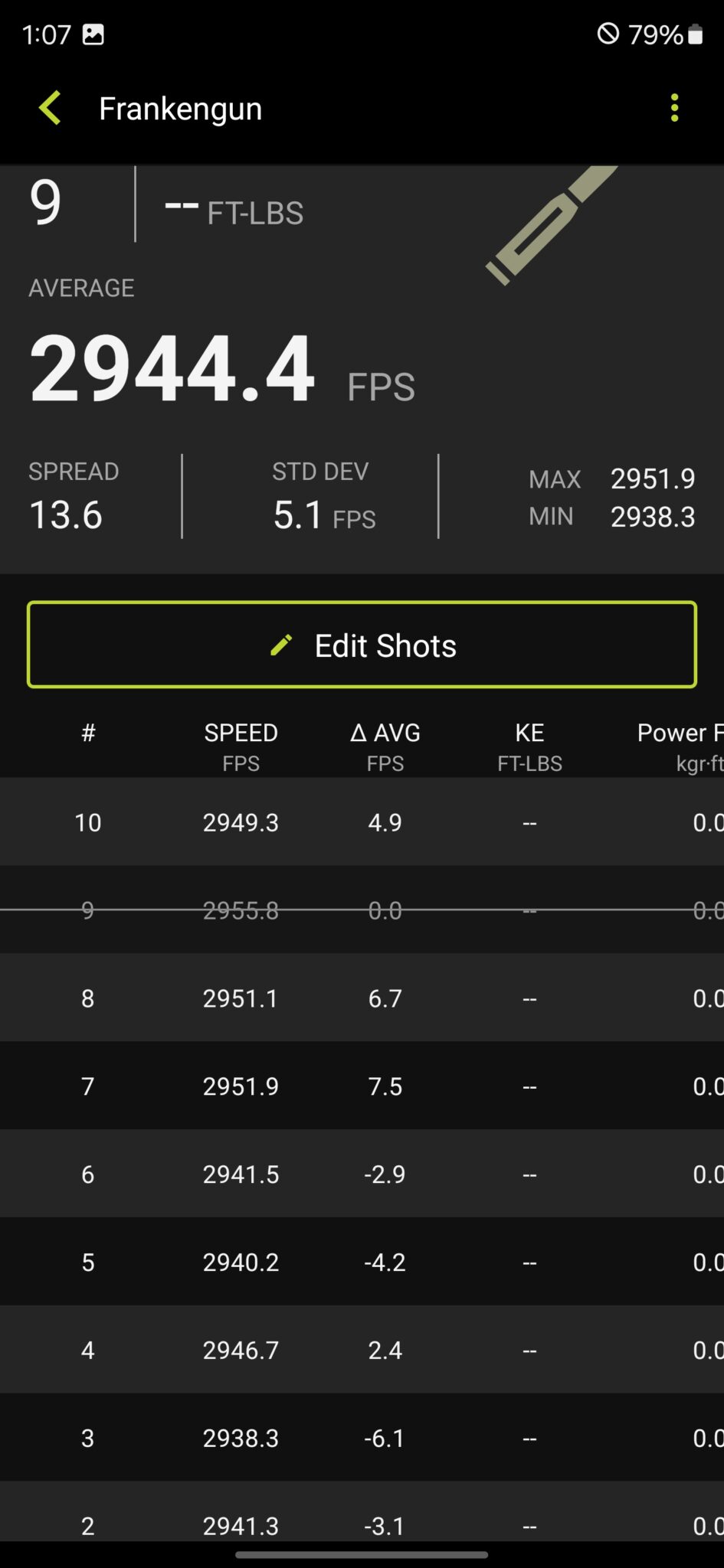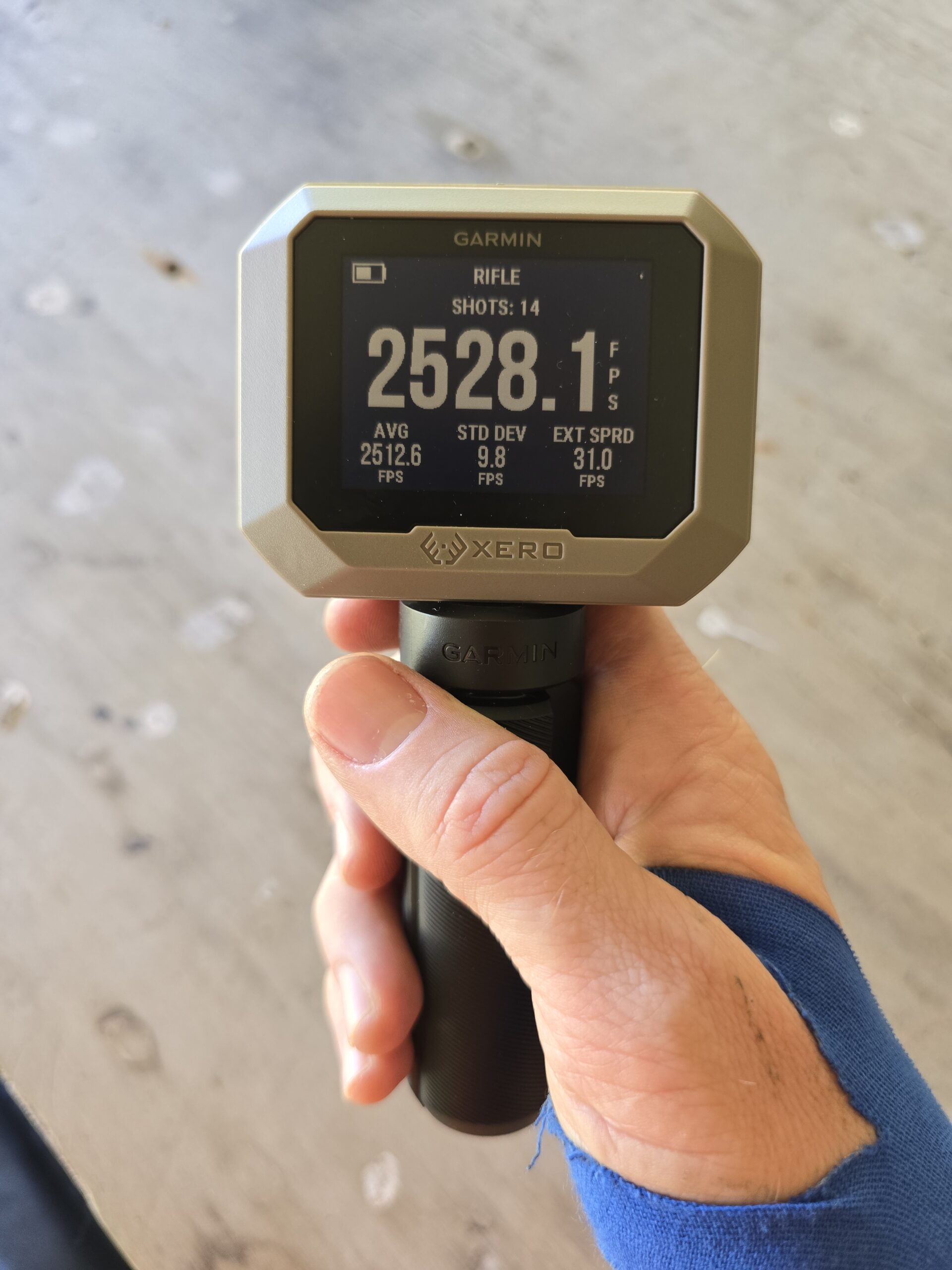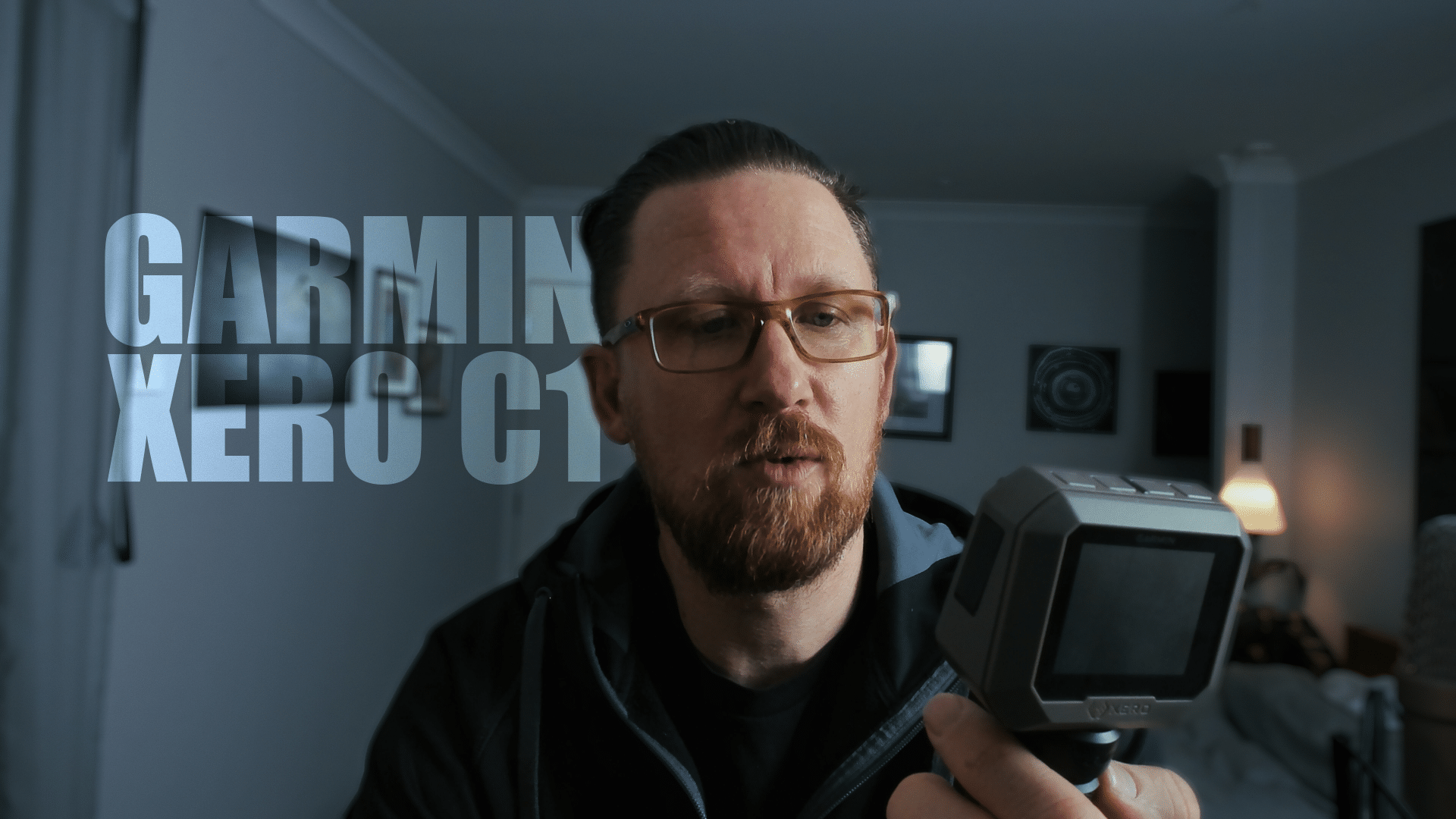However, a new option then appeared that seemed to address all my frustrations with the Labradar.
The Garming Xero C1 Pro Chronograph is smaller, seemingly easier to set up, and does everything that the Labradar does.
When the opportunity arose to check one out, I jumped at it! Kane from KT Services offered to loan me his, and of course, I said yes!

KT Services has been servicing the medical and communications sectors for over 15 years. It is one of the nation’s most dependable suppliers of first aid equipment, communication devices, and comprehensive training. They specialise in tailoring first aid kits to address the specific demands of diverse clients and scenarios and offer robust medical training to empower both organisations and individuals.
Why would I even need a chorongraph?
There is actually a good chance you don’t! For many hunters, primarily shooting at under 200 meters, it’s quite possibly not something you need. Get yourself a good solid zero with most modern ammunition, potentially set yourself up with a Point Blank Zero, and you are good to go!
However, for those wanting to stretch things out a bit further, a chronograph quickly becomes an indispensable tool for quickly calculating drop data for further distances and for reloaders, helping develop repeatable ammunition.
Don't worry - there is plenty more to read.
For example, I know from experience that you can expect the actual velocity of your firearm to be, on average, 50- 100 fps slower than that of the box. I think I have only ever had one rifle, and after years of doing it, it matches what was on the box! If you are getting a CDS dial for your Leupold – 100fps is quite a significant deviance – certainly enough to be causing you to shoot low (as you would be running slower than expected) at 400 meters plus.
The further you shoot out, the more that velocity difference matters. Therefore, in regards to reloading, having a consistent load with a low spread between shots means more consistent shot placement. You do that by reducing SD and ES, and the only way to measure that is with a chronograph!
Introduction: A New Contender in Chronograph Technology
In a world where technology constantly evolves, the Garmin Xero C1 Pro Chronograph is a refreshing innovation. As an ardent enthusiast of all things tech, I am always on the lookout for devices that promise to simplify and enhance my shooting experience. The Xero C1 caught my attention instantly, shining brightly in a field traditionally dominated by well-established brands.
My journey with the Garmin Xero C1 began with a simple question: Can it truly deliver on the promise of revolutionising what we know about chronograph technology? With many options already available, it stood out primarily in its claim to marry precision engineering with user-friendly design. Exploring its capabilities, I discovered that the Xero C1 does more than compete; it presents an enticing proposition that beckons shooters and sports enthusiasts to experience its sophisticated craftsmanship firsthand. This introduction, filled with curiosity and anticipation, set the stage for an insightful exploration of what it means for a product not just to enter the market but to redefine it.


First Impressions: Garmin Xero C1’s Compact Design
This thing is small and compact. Currently, I have a fairly large setup with the Labradar—a big box to carry it in, the tripod, and a battery pack—and it’s a bit of a mission to carry around with me.
The Garmin Xero C1, however, feels like a breath of fresh air with its sleek and minimalist design. Its portability is liberating, allowing me to enjoy my shooting experience without being bogged down by cumbersome equipment. I can simply toss it into my range bag, knowing it won’t weigh me down or require a team of mules to transport.
Ease of Use: Setting Up the Garmin Xero C1
Oh, man. Turn it on, quickly select your setup, and you are ready.
I didn’t check, but if you could get it to just jump into the default settings, it could be even better. As it is, the setup skips all the lining up and microphone placement of the Labradar (I tend to use it with suppressed firearms, and you need an external microphone to do that).

Performance Comparison: Garmin Xero C1 vs Labradar
I didn’t compare.
There are already plenty of reviews out there that have done this part, so I figured I would take the opportunity to not even have to set up the Labradar for once—just put down the Garmin and shoot.
In short, everything I have read has had the Labradar, the Magnetospeed, an Ohler, and the Garmin all coming in much, much the same. Don’t get yourself too twisted up in this. It’s valid data. Go shoot.
This is an excellent video with all the comparison data you could ever want:
The Missing Feature: Downrange Velocity Explained
The absence of downrange velocity readings in the Garmin Xero C1 might initially seem like a drawback, especially if you’re transitioning from a system like the Labradar, which offers such capabilities. Downrange velocity can be a useful metric when fine-tuning your shooting performance, providing detailed insight into how your bullet’s speed changes as it travels toward its target. For some, particularly those striving for utmost precision, this information aids in calculating the ballistic coefficient (BC) with slightly more accuracy over multiple distances.
However, it is crucial to reflect on how this feature integrates with typical shooting practices. When evaluating equipment, it’s easy to wish for every piece of data possible. The reality, however, is that while knowing the BC can optimise efficiency, its absence seldom hinders the average shooter’s experience. Many enthusiasts and professionals have found success by focusing on velocity measurements closer to the muzzle.
Here is the pinch – you can only calculate your BC at the muzzle. That’s not the one you need – what you want is a custom BC curve that requires you to record way further out than the Labradar can provide. Sure, there are much bigger units that can track the projectile speed (and therefore calculate a true customer BC for you), but unless you have the resources and space to shoot them, it’s kind of a silly thing to miss.
Ok. So how about the new Labradar LX?
Well. It feels that Garmin beat Labradar to the gate with this one. The LX is similar in size, but the fit and finish don’t look as good; you still need to arm it before shooting, its primarily an acoustic trigger, and well, I don’t have a lot of faith in the company to update and maintain the system – the original Labradar never really worked with the app. No updates seem to have ever fixed it. Compare that to a company like Garmin – where updates and improvements are constant, and it doesn’t seem to be even close.
Why the Garmin Xero C1 is a No-Brainer for Shooters
The Garmin Xero C1 is an excellent choice for beginners and seasoned shooters because it’s practical and easy to use. Its small size makes it easy to carry, unlike more significant devices like LabRadar and MagnetoSpeed. Its easy setup means you spend less time preparing and more time perfecting your shooting.
The C1 also shines because it can work without interference from other shooters, which is crucial in busy environments. Its simple design means it fits easily into your routine without causing any hassle.
Technologically, the Garmin Xero C1 matches the MagnetoSpeed’s ability to capture shots, but it’s easier to use. While it doesn’t offer downrange velocity measurements like LabRadar, many shooters find this isn’t a big deal, given the ease and convenience of the C1.
To me, choosing the Garmin Xero C1 is an easy decision. Now I need to sell the Labradar.
You can grab yours over here from KT Services – https://ktservices.nz/product/garmin-xero-c1-pro/ – again – massive thanks to Kane for lending me his.



